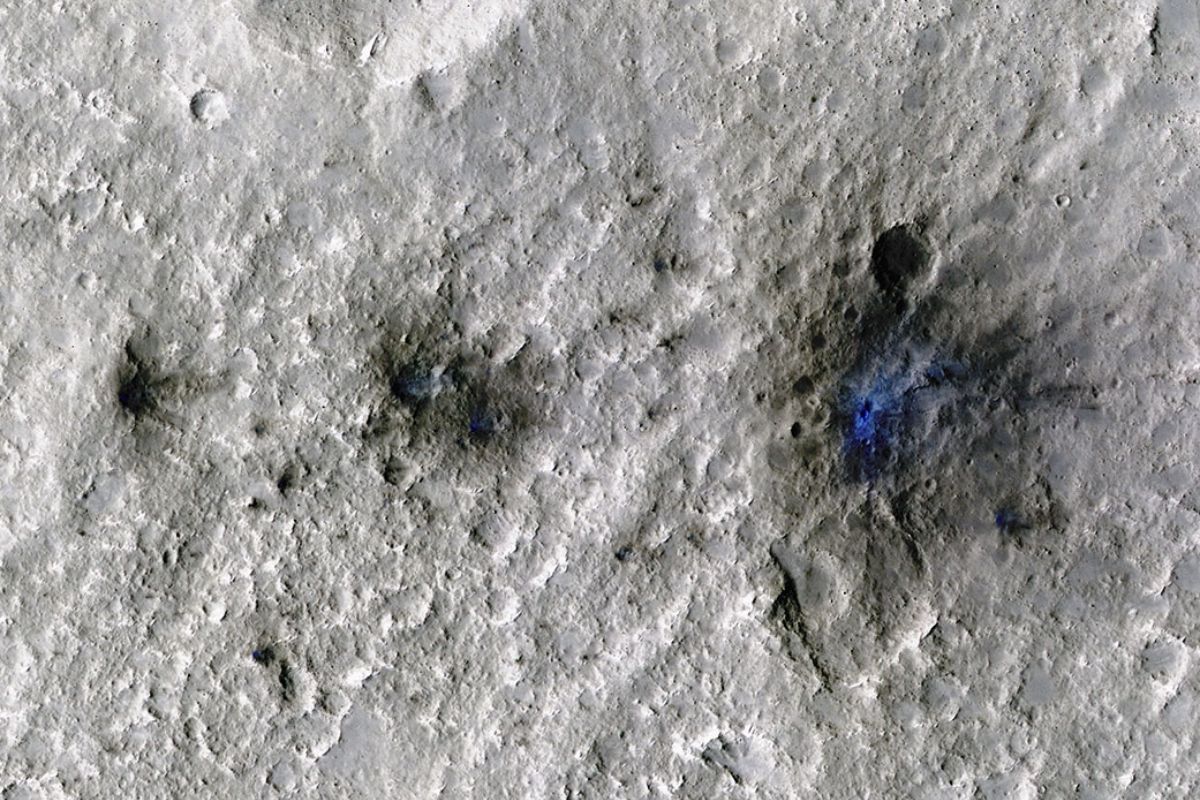NASA’s InSight lander has detected impact sounds from four space rocks that crashed on Mars in 2020 and 2021. It marks the first time seismic and acoustic waves from an impact have been detected on Mars.
A new paper published in Nature Geoscience details the impacts, which ranged between 85 and 290 kms from InSight’s location, a region of Mars called Elysium Planitia.
Advertisement
The first of the four confirmed meteoroids made the most dramatic entrance: It entered Mars’ atmosphere on September 5, 2021, exploding into at least three shards that each left a crater behind.
Then, NASA’s Mars Reconnaissance Orbiter flew over the estimated impact site to confirm the location.
After locating these spots, the orbiter’s team used the High-Resolution Imaging Science Experiment camera, or HiRISE, to get a colour close-up of the craters.
“After three years of InSight waiting to detect an impact, those craters looked beautiful,” said Ingrid Daubar of Brown University, a co-author of the paper.
After combing through earlier data, scientists confirmed three other impacts had occurred on May 27, 2020, February 18, 2021 and August 31, 2021.
InSight’s seismometer has detected over 1,300 marsquakes.
Provided by France’s space agency, the instrument is so sensitive that it can detect seismic waves from thousands of miles away.
“But the September 5, 2021, event marks the first time an impact was confirmed as the cause of such waves,” said NASA.
The sound of a meteoroid striking Mars – created from data recorded by NASA’s InSight lander – is like a “bloop” due to a peculiar atmospheric effect.
The four meteoroid impacts confirmed so far produced small quakes with a magnitude of no more than 2.0.
But the impacts will be critical to refining Mars’ timeline.
“Impacts are the clocks of the solar system,” said the paper’s lead author Raphael Garcia. “We need to know the impact rate today to estimate the age of different surfaces.”
Scientists can approximate the age of a planet’s surface by counting its impact craters: The more they see, the older the surface.









